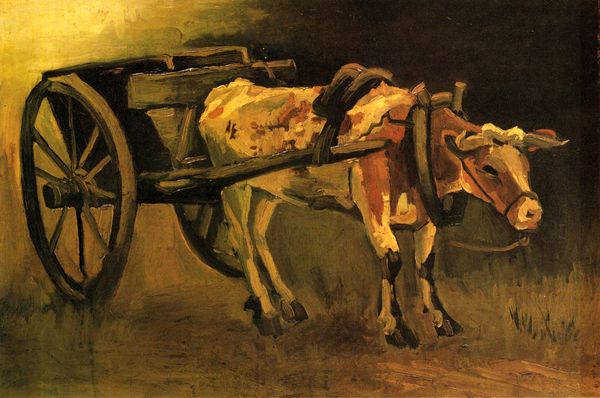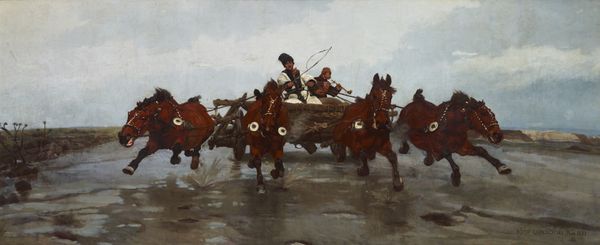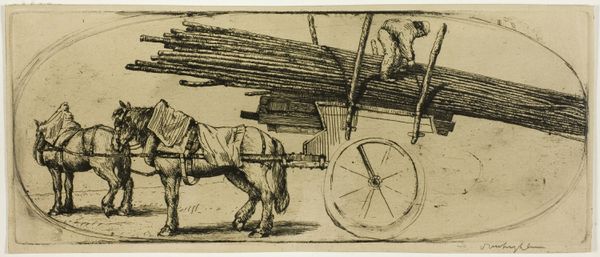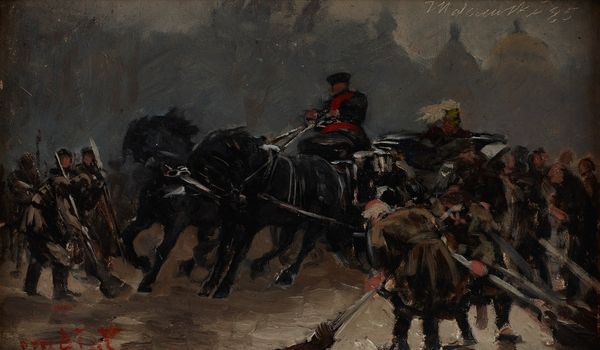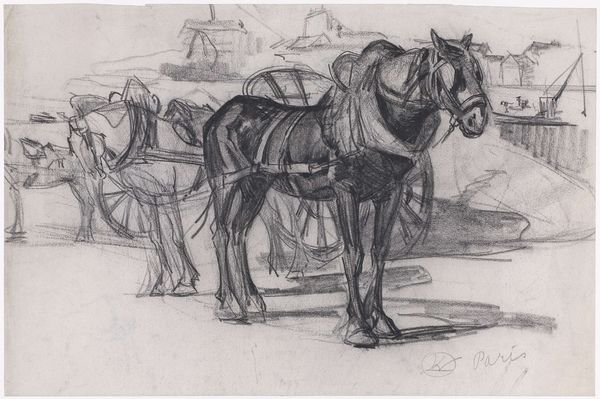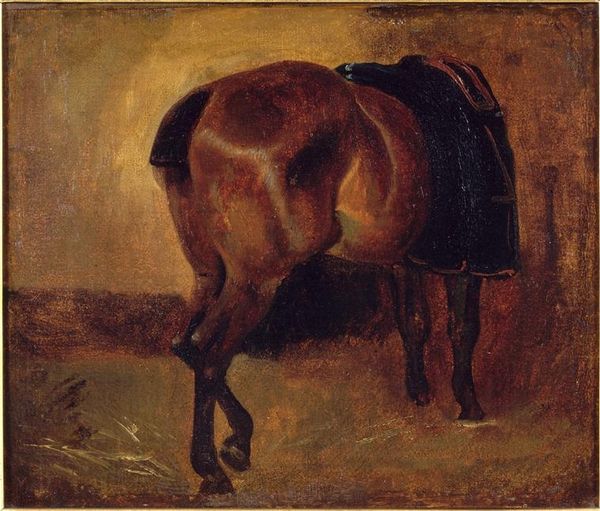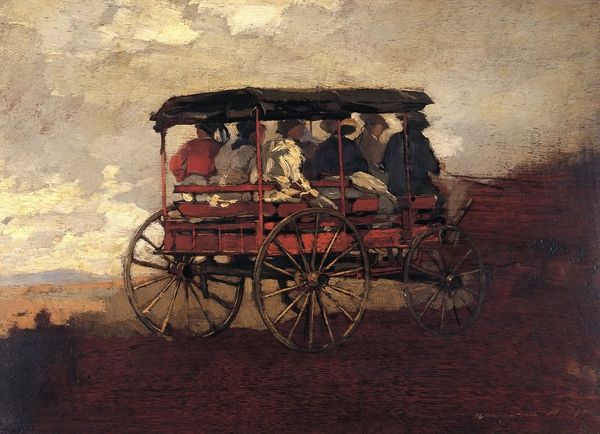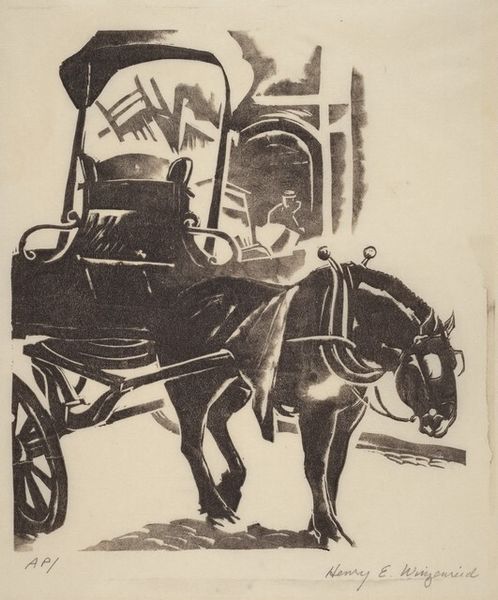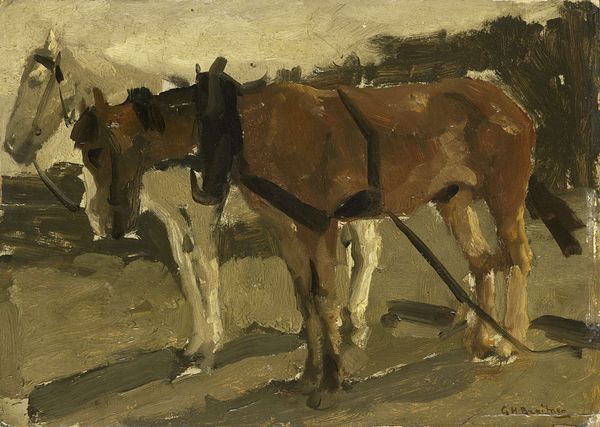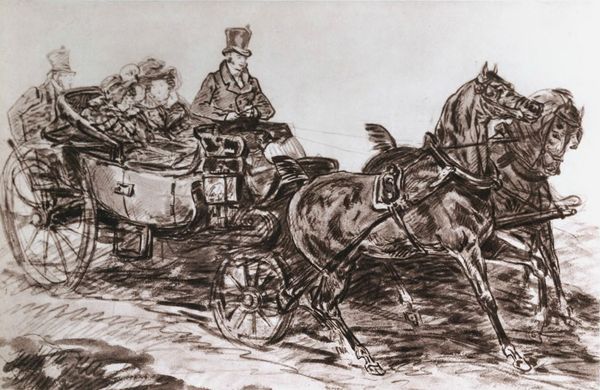
#
animal
#
charcoal drawing
#
painted
#
possibly oil pastel
#
oil painting
#
acrylic on canvas
#
earthy tone
#
underpainting
#
painting painterly
#
charcoal
#
watercolor
Copyright: Public Domain: Artvee
Curator: I'm struck by the somber tone of this composition. It's an earthy palette – mostly browns and greys – creating a somewhat melancholic atmosphere. What do you think? Editor: It is a compelling image, isn't it? We’re looking at “Horse and Cart,” an oil painting by John Constable, dating back to around 1814. Constable’s work provides valuable insight into the social and economic structures of early 19th-century rural England, specifically the lives of working animals and agricultural laborers. It highlights the exploitation of labor within a pre-industrial economy, a theme frequently underrepresented in conventional landscape art. Curator: Yes, and the cart itself appears almost weighed down by the implications of labor and class structures, it’s almost like a symbol. I think the horse looks fatigued, adding to that overall feeling. Notice how the texture makes the animal appear almost like worn leather? It feels as if this image reflects the exhaustion inherent in this lifestyle. Editor: The horse in art, historically, carries enormous symbolic weight. We see it across cultures representing power, freedom, and even nobility. However, here, that symbolism seems deliberately subverted, replaced by a feeling of burdened servitude. It's fascinating how Constable seems to be repurposing a classical trope to comment on the realities of rural labor. The colors almost resemble cave paintings, linking them to primordial animal uses in agrarian lifestyles. Curator: I agree. The composition further emphasizes this sense of confinement. The background is undifferentiated and dark, almost pressing in on the horse and cart, restricting the narrative. This is further impacted through the contrast of a small area for movement. Editor: It does prompt one to think about agency and confinement, and how these themes permeate even seemingly simple landscapes. Curator: The image also offers potential for deeper examination from an animal studies perspective. I mean how did they represent horses as working bodies, not simply as aesthetic objects. Editor: An important point; perhaps a modern discourse surrounding the use of animal labor would find a touchpoint in this artwork. Well, it’s certainly provided much food for thought. Curator: Indeed, prompting us to reflect on how art serves as both a historical document and a stimulus for ongoing discussions.
Comments
No comments
Be the first to comment and join the conversation on the ultimate creative platform.
